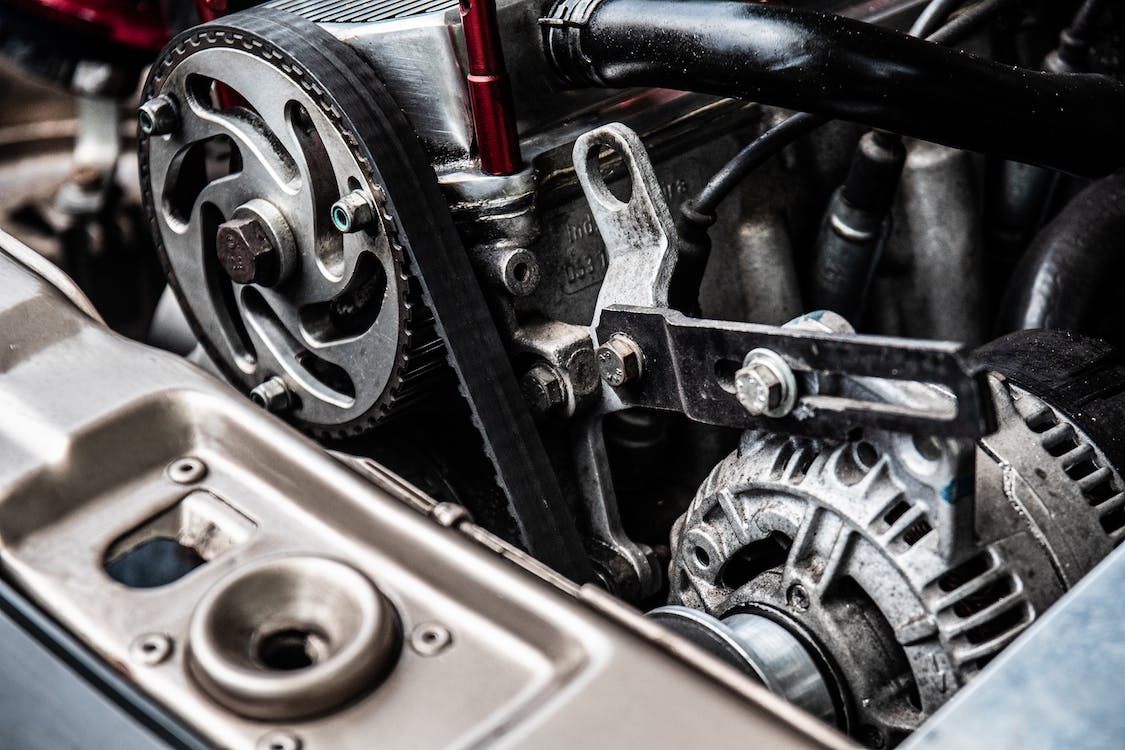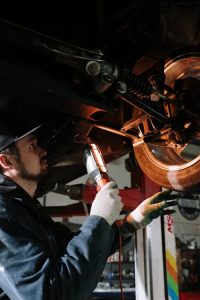Summary
– Types of alternator pulley
– Alternator pulley malfunctions
– Replacement of the alternator pulley
An alternator pulley, what could be simpler on the surface? This accessory is more complex than it seems and can cause major malfunctions! Let’s see closer below.
Types of alternator pulley
Pulleys differ in the drive belts’ shape and the alternators’ functions. Their role is to establish, with the accessory belt, the link between the rotation of the crankshaft and the alternator.
Trapezoidal profile pulley
As its name indicates, its shape is the negative imprint of the belt of the same name. It is rarely used in automobiles today due to its limited motion transmission performance.
Poly-V profile pulley
It is presented with grooves in the direction of the circumference (generally from 2 to 6 grooves in the automobile), and it has replaced the previous pulleys on vehicles.
Its advantages:
– the contact surface with the belt is larger, so the power to be transmitted is greater;
– the height of the grooves is less important than for the pulleys with trapezoidal profile, its diameter is reduced.
Freewheel (or disengageable) pulley
The role of this pulley is to smooth out the transmission jolts between the crankshaft and the alternator in the following cases:
– Jolts caused by engine operation:
◦ In the 4-stroke cycle, for 1 cylinder, there is one engine stroke (combustion-expansion) for three resisting strokes (intake-compression-exhaust).
◦ The forces on the crankshaft will be different depending on the strokes and the angular position of the crankshaft, added to the offset of the cycles for multi-cylinders, creating jerks. The effect will be an acyclic operation of the crankshaft transmitted to the belt and the alternator, causing significant stresses.
◦ The freewheel (the principle of which is the bicycle freewheel) makes it possible to disengage (order of magnitude: hundredths of a second) the alternator during these stresses and to eliminate these jolts.
– During deceleration: when the engine decelerates abruptly, the inertia of the alternator, without the disengagement of the pulley, would lead to high stresses on the transmission elements (belt – rollers – pulleys).
Note: The inertia of the alternator is due to its rotation (~10,000 to 14,000 rpm) and the rotating mass of its rotor.
Decoupling pulley
Like the freewheel, its purpose is to absorb transmission jolts, but its technology is different: it is a structure whose core is made of rubber, based on the Damper pulley principle.
Damper pulley: motor pulley consisting of a hub separated from the pulley by a rubber strip that filters vibrations and shocks (this rubber part can disintegrate).
Alternator pulley malfunctions

The symptoms of a defective pulley are:
– Noises:
◦ bearing and scraping noises following the destruction of the alternator front bearing or pulley disengagement system for systems equipped;
◦ accessory belt noises: unaligned belt or inadequate belt width;
◦ wrong belt size: too short, it forces on the pulley; too long, it beats hard and squeals when starting.
– The belt overlapping the pulley or jumping: following an alternator replacement, the parallelism and alignment of the pulley may not be respected (alternator fastening not well positioned or alternator not compliant).
Replacing the alternator pulley
Replacing this part is not particularly difficult, whether for a conventional alternator or an alternator with a disengageable pulley. Most of the time, removing the alternator (observing the tightening torques) will be necessary.
The only difficulty may come from the starter-alternator for vehicles equipped with a stop-and-start system (in this case, entrust the operation to a professional).
Read more:




